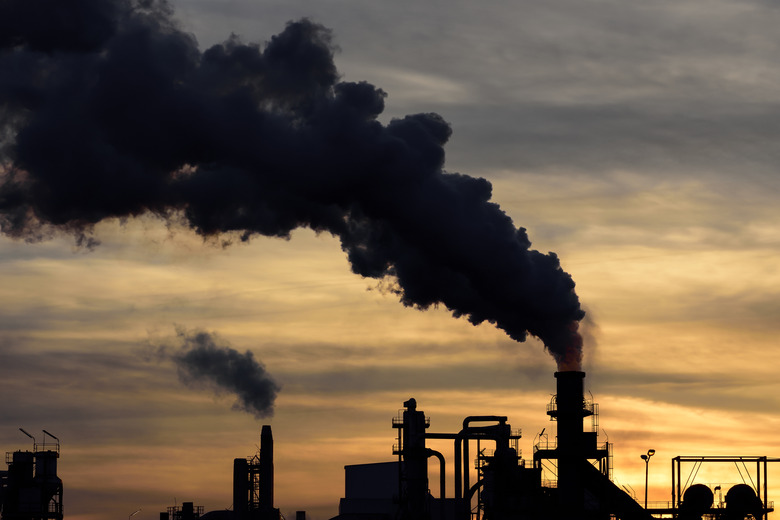What Are The Effects Of Biological Magnification?
Biological magnification, or biomagnification, occurs when pollutants taken up by organisms at the base of the food chain reach high concentrations in the bodies of animals at the top of the food chain. Effects of biomagnification vary widely depending on the pollutant, organism and ecosystem in question.
Persistent Pollutants
Persistent Pollutants
Some pollutants, including those made up of a single element and certain man-made chemicals, are persistent in nature, meaning they do not readily biodegrade. A primary producer like a plant or alga can absorb persistent pollutants that are chemically similar to nutrients required for its growth. If that material is still in the plant when it is eaten by the next organism up the food chain, that organism will likely absorb more of the toxin over time as it consumes multiple plants. Carnivores who consume multiple animals in the area will absorb more yet.
Buildup in Fats
Buildup in Fats
Some pollutants are quickly expelled from the body, but those that are fat-soluble are stored in the lipids of an organism and can only be removed through the action of specified enzymes. If this organism lacks such enzymes, or if the rate of uptake of a particular lipid-soluble pollutant is greater than its enzymatic removal, the substance will build up in the body of the organism. This narrows pollutants that biomagnify to two categories: metals and persistent organic pollutants. DDT is a well-known example of the latter.
Ecological Process
Ecological Process
A pollutant building up in the lipids of a primary producer may never reach high enough concentrations to harm that organism in any way. This is where the key concept of biological magnification comes into play. Organisms higher in the food chain contain higher concentrations of pollutants than those lower in the food chain. When a pollutant reaches a certain concentration within a particular organism, it begins to decrease the function of and even permanently damage various body systems.
Effects on Organism
Effects on Organism
Organisms at the top of the food chain are at a greater risk of damage due to biomagnification. Mercury, for example, damages the nervous, gastrointestinal and cardiovascular systems. Mercury poisoning is of particular concern to unborn fetuses and young children, which is why pregnant and nursing mothers are encouraged to avoid fish, which often contain high levels of mercury. Organisms at the top of the food chain are affected by variety of persistent organic pollutants that are carcinogenic and toxic to the reproductive, nervous and immune systems. DDT, for example, can cause sterility and thin eggshells in birds of prey.
Cite This Article
MLA
Vislova, Alice. "What Are The Effects Of Biological Magnification?" sciencing.com, https://www.sciencing.com/what-are-the-effects-of-biological-magnification-13372912/. 28 December 2018.
APA
Vislova, Alice. (2018, December 28). What Are The Effects Of Biological Magnification?. sciencing.com. Retrieved from https://www.sciencing.com/what-are-the-effects-of-biological-magnification-13372912/
Chicago
Vislova, Alice. What Are The Effects Of Biological Magnification? last modified August 30, 2022. https://www.sciencing.com/what-are-the-effects-of-biological-magnification-13372912/
